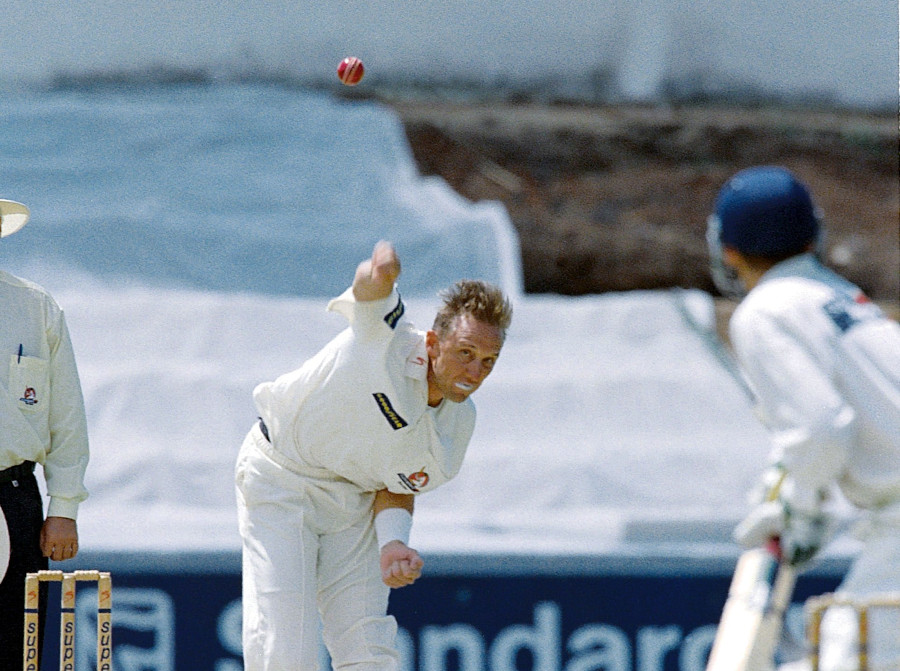South Africa has a rich cricketing tradition and held its first domestic competition this month 130 years ago. Since then, it has undergone numerous facelifts and changes of format but essentially endures as the CSA 4-Day Domestic Series.
The beginning
The Currie Cup had been donated to a Kimberley team, who performed the best against a touring outfit who visited for the 1888-89 season, by Sir Donald Currie.
In its inaugural season, the Currie Cup was contested between two sides in a single match. The Kimberley team hosted the three-day match at the Eclectics Cricket Club Ground and faced Transvaal.
The match was Transvaal’s first-class debut, but they claimed the Currie Cup thanks largely to a hundred from England wicketkeeper Monty Bowden, who stayed on in South Africa after the 1888-89 tour to participate in the gold rush on the Witwatersrand.
READ: Remembering Ntini’s final Test 10-for:
In a curious bit of symmetry, Currie also awarded rugby’s Currie Cup to a team from Kimberley. Both trophies were awarded to the home side who performed best against the tourists.
Kimberley ‘regained’ the Currie Cup the following year, while no tournament was held in the 1891-92 season. In the 1892-93 season, Western Province were added to the competition, and the Kimberley team became known as Griqualand West. WP won the Currie Cup at their first attempt. Natal and Eastern Province were added for the fourth tournament as WP held on to the cup.
WP quickly became a dominant power, winning their fourth title in 1898. That year the Orange Free State were added to the Currie Cup before the outbreak of the Anglo-Boer War forced the cup to take a four-season break.
On resumption, Transvaal reasserted themselves as South Africa’s premier side, winning the next three editions of the Currie Cup.
In 1910-11, Natal won the Currie Cup for the first time. Between 1905 and 1914, the cup was held every second year and welcomed the first appearances of Border, a Rhodesian side and South Western Districts.
Natal won the last Currie Cup before the outbreak of the First World War.
Once the Currie Cup resumed, so did the dominance of Western Province and Transvaal, with Natal occasionally disrupting the balance of power.
When the Second World War broke out, Transvaal had won the Currie Cup 11 times outright and shared the trophy twice.
After WWII, Natal emerged as the province to beat in the 1950s and 60s. In the 1951-52 season, the league was split into two divisions, with Transvaal the first side to taste relegation and the Orange Free State promoted.
READ: Over-50s World Cup gave glimpse of its potential
Natal became South Africa’s most successful side in the 1967-68 season, but they could only remain on their perch for a single campaign before Transvaal once again drew level and then overtook their rivals in 1971.
During the 70s, the second division became a separate competition from the Currie Cup, known initially as the Castle Bowl. This tournament would form the basis for South Africa’s second first-class competition, that today is the semi-pro CSA 3-Day Provincial Cup.
Transvaal and Natal battled for dominance throughout the decade, with Western Province also having their name etched on to the cup. Still, when the ‘Mean Machine’ emerged in the 80s, the Joburgers became the undisputed kings of South African cricket.
The Castle Cup
At the outset of the 1990s, it was clear the face of first-class cricket was changing, and the Currie Cup took on its first title sponsor, becoming known as the Castle Cup in the 1990-91 season.
Cricket’s traditional powers started to wane a little at this time, with Eastern Province winning their first title in 1989, and Free State, powered by the likes of Allan Donald and Hansie Cronje, won the Castle Cup in 1993.
SuperSport Series
As international cricket returned to South Africa in the 90s, interest in the first-class set-up dropped off, but that didn’t stop broadcaster SuperSport from assuming the naming rights for the 1996-97 season.
Ironically, it was during this time that first-class cricket began disappearing from television screens, although the broadcaster could hardly be blamed for something that was a global trend.
During this time, Cricket South Africa introduced the franchise system, amalgamating 11 provincial teams into six combined teams.
In the first franchise season in 2004-5 the Dolphins (formerly Natal, then later KwaZulu-Natal) and the Eagles (formerly the Free State and Griqualand West) shared the title.
Sunfoil Series
In the 2012-13 season, the Willowton Group took up a partnership with Cricket South Africa and the four-day competition was renamed again, this time becoming the Sunfoil Series.
Sunfoil were the title sponsors for six seasons of the first-class competition, with the Titans emerging as the new dominant force in South African domestic cricket during this time.
CSA 4-Day Domestic Series
Sunfoil pulled their sponsorship of the competition ahead of the 2018-19 season, after which Cricket South Africa rebranded the tournament as simply the 4-Day Domestic Series. Even now, it occasionally goes by the 4-Day Franchise Series.
CSA is believed to be keen to take on a new title sponsor for the tournament, while they have also flirted with a return to the 11-team system.
All in all, the Lions retain the standing as South Africa’s most successful side in first-class cricket, when their 24 Currie Cup outright wins are factored in. The Lions have won the last two editions of the tournament, claiming the 2019-20 title after the season was called off due to the coronavirus pandemic.
The Titans, who trace their lineage back to Northern Transvaal (formerly North-Eastern Transvaal), are the most successful side in the franchise era with five titles to their name. The Cape Cobras’ four tournament wins put them in second place in that regard.
Photo: Getty Images







